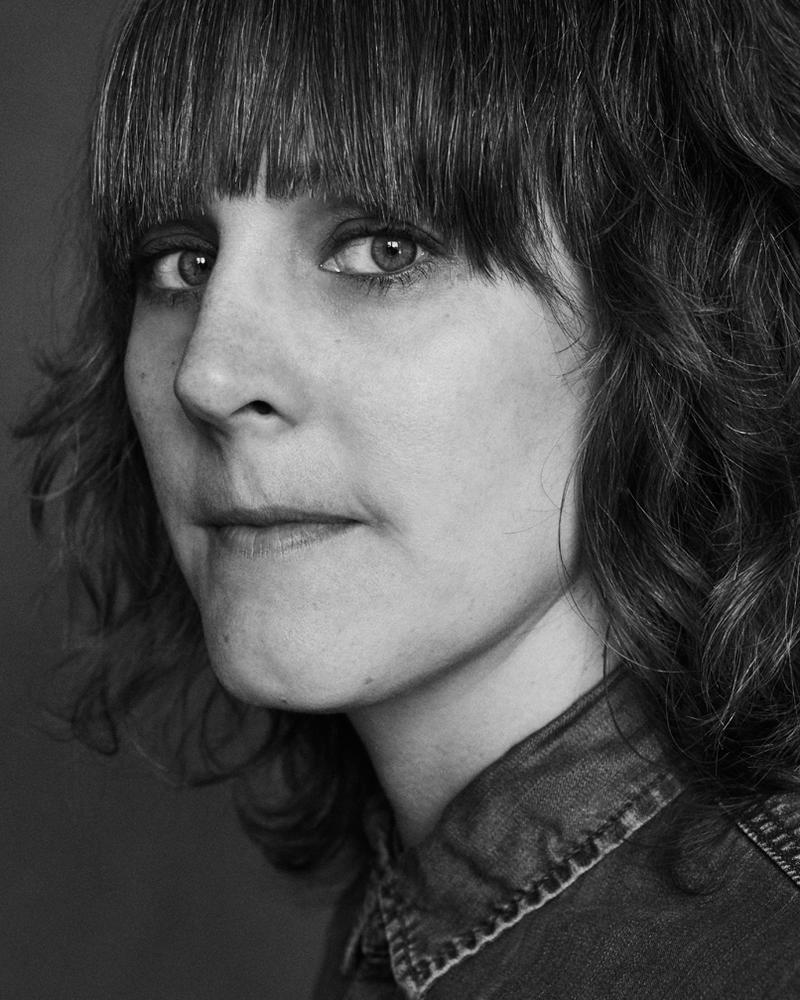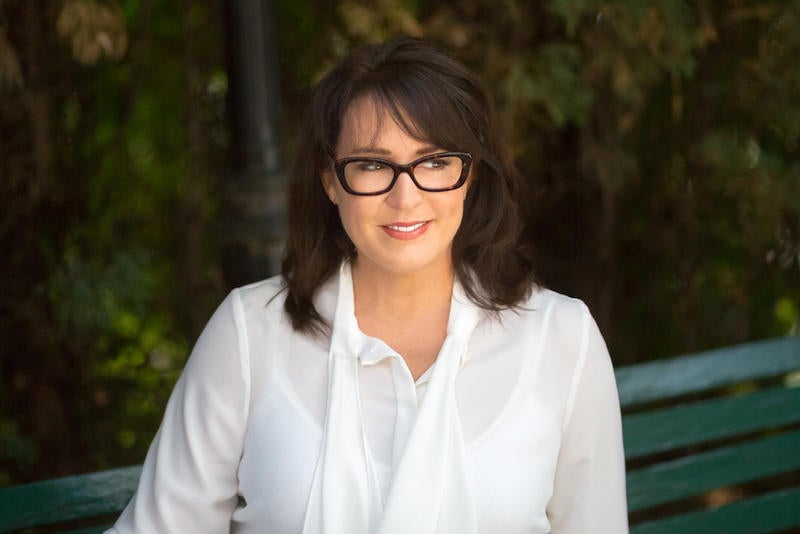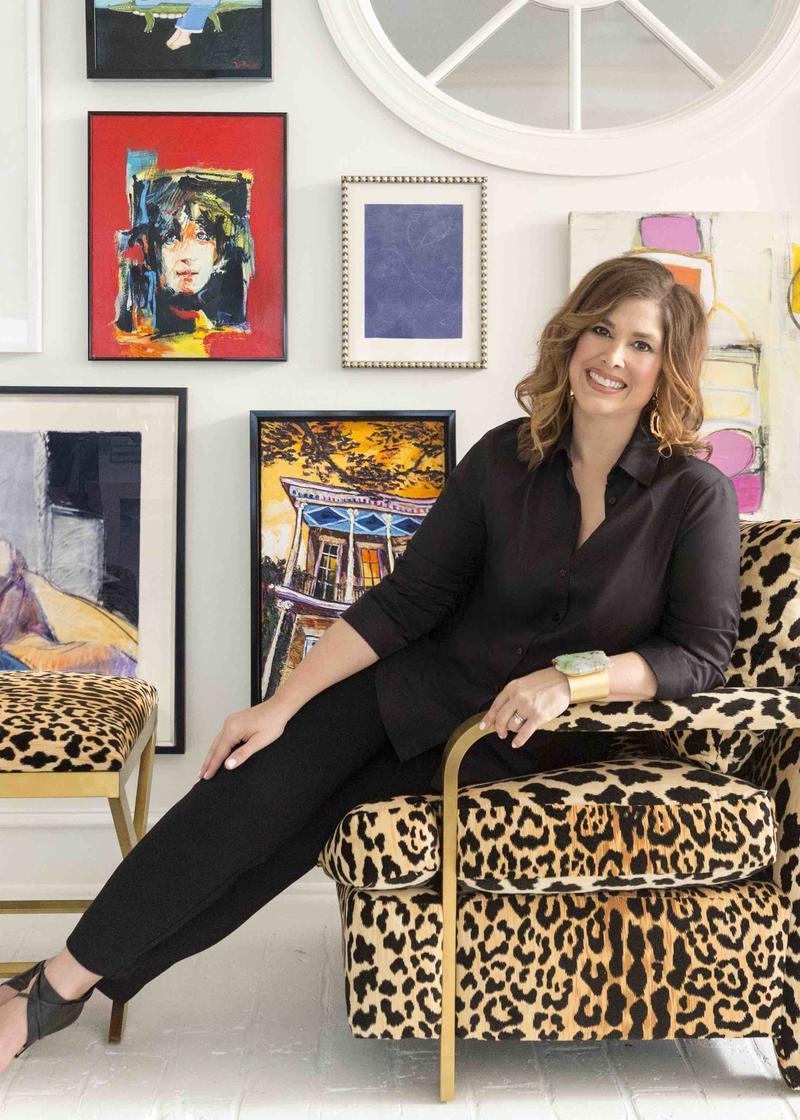It was the summer of 2016 when Rebecca Atwood received an email request from a friend inviting her to a business coaching session at Industry City in Brooklyn, New York. The designer, whose three-year-old company had just signed a deal with Method Home and was about to launch its first book, thought, Why not? The result of the session with Holly Howard was unlike anything Atwood could have predicted.

“It was a huge changing point in how I looked at the business and thought about my career,” Atwood tells Business of Home. “The biggest impact of that class was getting clear on our purpose and values, as that made everything else easier.” Within two years, Atwood opened her first retail space and expanded her category offerings—once confined to fabrics and pillows—to bedding and wallpaper.
“What I love about Holly is that she really understands growing a business when you want it to be your life—not an MBA student looking to sell a business,” says Atwood. “I’ve changed so much since working with her and I don’t think we would have taken on these big growth changes without her—the store, for example, was huge for us. Holly has helped me become a better leader, navigate growing a team, creating systems and planning for the future of the company.”
Many creative business coaches hear a similar story: Clients have dedicated years to pursuing a business in their passion, working hard and putting in long hours—yet they haven’t found success. While interior designers may play in a billion-dollar industry, they are all too often working on a shoestring budget. Business coaches like Howard have set out to change that narrative.
“People often say to me, ‘I’m a creative person, so business is really foreign to me,’ and I actually think building a business is probably the most creative thing you can do,” says Howard. “To watch people create something out of nothing is really fascinating. Rebecca Atwood was a beautiful example. Someone who came through the class, identified a vision and made it a reality within two years—and thrived.”
Howard began her group coaching sessions in 2008, after building a clientele of New York City restaurateurs in need of organizational support. With a background in therapy and restaurant management, she began developing infancy-stage companies—those with no systems, tools or long-term visions—into the adolescent and even maturity stages of a business. “I believe that you can make all jobs good jobs and people just need to better understand what it means to run a business in order to make that a reality,” she says. “Anybody can start a business, but starting a business and growing a business are two separate skill sets.”
Every business coach’s process is different. Some, like Howard, take a holistic approach by analyzing the business from its founding to its short-term and long-term goals. Others, like Kimberley Seldon’s Business of Design, take a more mentoring-focused approach. An interior designer by trade, Seldon shares the learnings from her 25-plus year career in a problem-solving approach for designers.

“I don’t push people to find a new solution. What I do is say, ‘Here’s what I do. Why don’t you try it,’” says the Toronto-based designer and chief advocate at Business of Design. Her teachings—which total three books and nearly 150 online courses ranging from charging strategies and client management to contract building—come from years of struggling herself. “I had already been in the business for more than a decade and I was still not making it work. That was a real embarrassment for me,” says Seldon, who hired a general business coach a decade into “failing miserably” at turning a profit as an interior designer.
“When I talk to other designers, there is so much pain because they’re trying so hard and not succeeding. I completely relate to that,” she says. “There’s this billion-dollar industry and the people who aren’t making money are the interior design professionals, and that’s tragic.”
Seldon’s design background helps shape her actionable approach. When the wallpaper installer of a designer client recently placed the wallpaper upside down, the client sought Seldon’s advice. “I said, ‘This is what I would do: Here’s the email I would write. Here’s what I would offer to pay. Here’s what I’d ask someone else to pay for. Let’s just solve this right this second,’” she recounts. “Whereas a traditional business coach would not necessarily have the tools to help you do that.”

Tobi Fairley, also an interior designer who transitioned to a career as a certified life and health coach, can relate. “Most of my clients are anywhere from five to 20 years in business, and they feel so frustrated. They’ve been banging their heads against the wall for years and are worn out not making the profits they deserve.”
Despite popular opinion, having a successful business doesn’t mean overloading your schedule and causing stress. It’s a belief that Fairley has framed her coaching practice, Design You, around, adding life and health coaching certifications to her resume. “I could give people the best business tools in the world, but if their mindset wasn’t in place to implement them, it isn’t going to work,” she says.
Determining whether business coaching is for you, Seldon says, comes down to returning business and profits. “If you are consistently making your clients happy—are they hiring you again and again, are they repeat customers, are they giving you referral customers?—then you’re doing great,” she says. “Are you making a big profit? You should be, at a minimum, profiting over six figures. If you’re doing that and you’re getting your rooms finished so that they can be published in a magazine, then you’re doing great. But if you’re missing any one of those three things, then there’s a better way to do it.”



























